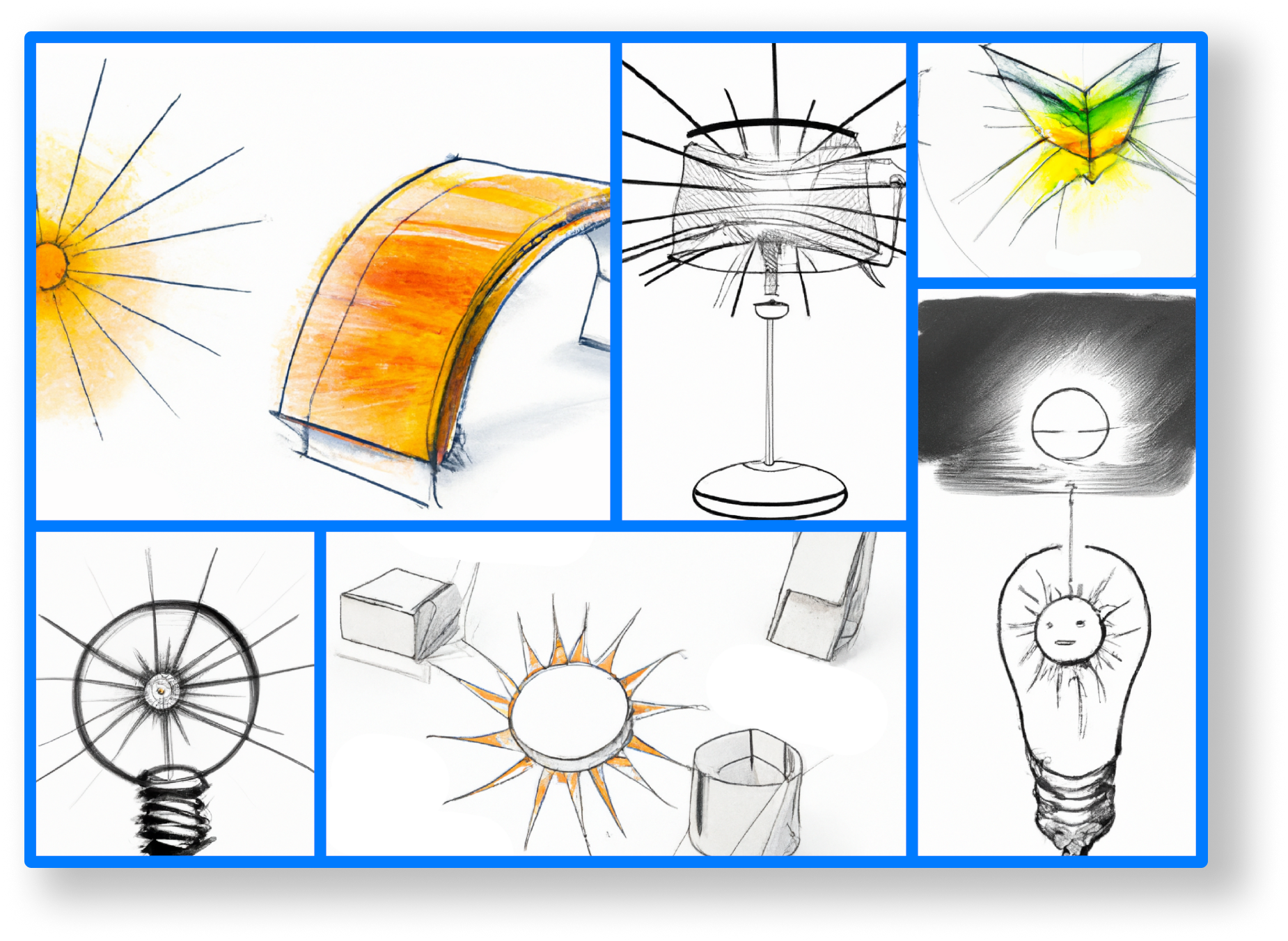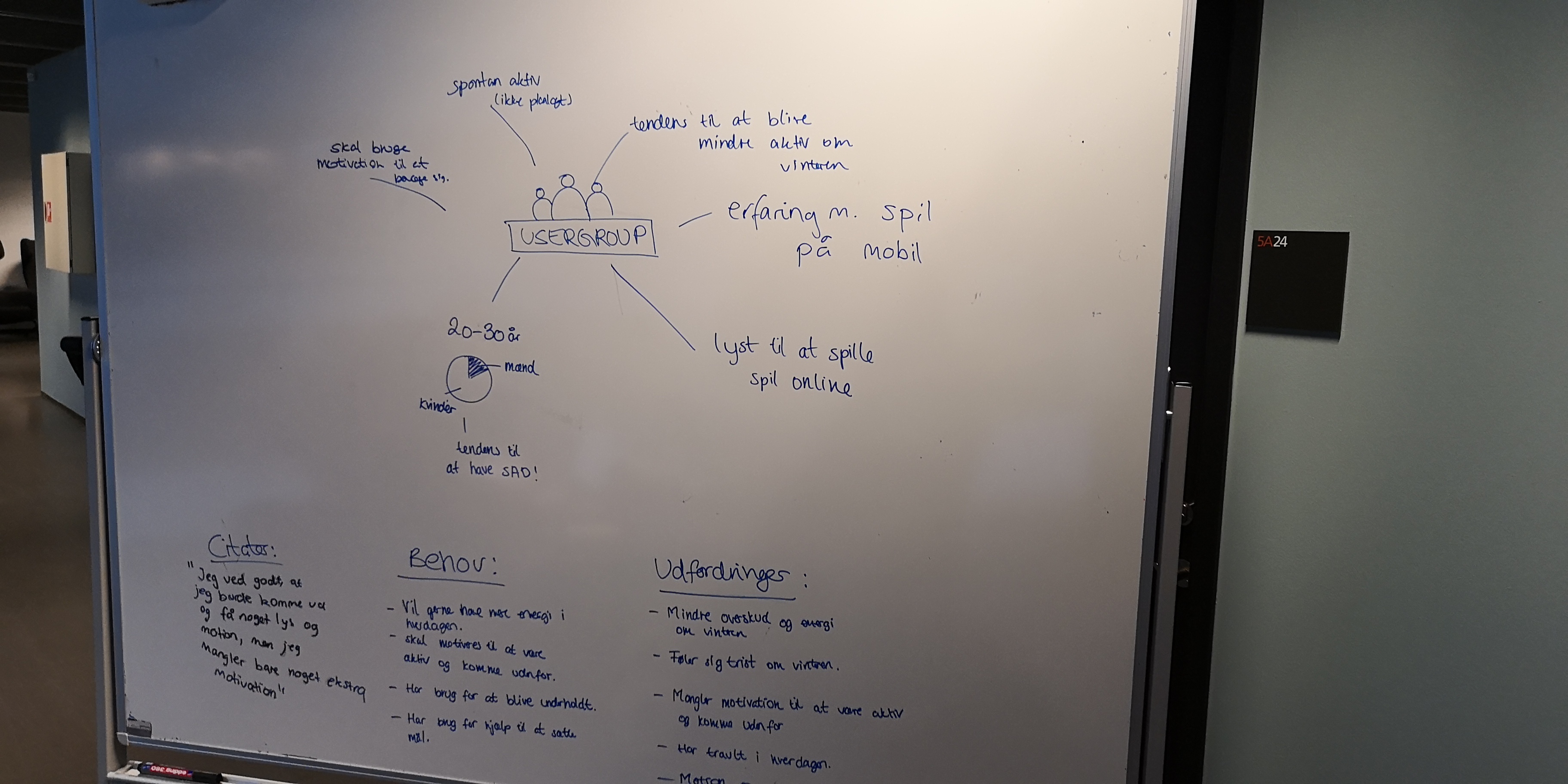
AURORA is a game aimed at people with "SAD"
When the winter season starts, many people find that their mood and energy levels drop. However, the transition from summer to winter is especially hard for people who suffer from Seasonal Affective Disorder (SAD). SAD can be described as a recurring, depression-like condition that occurs at the same time every year. The impact can be so severe that the symptoms can lead to suicidal thoughts and manic states.
The primary purpose of the game was to try and help these people by increasing their activity levels and get them outside more to get natural light. Inspiration for the project included nudging theory, gamification, behavioral design and “the Hook”. The projects conclusion was a presentation and feedback session held in the atrium at ITU.
The Process
At the beginning of the design process, one may not necessarily be aware of the issues that may arise in a design situation. However, as one learns about and reflects on it, many possible directions emerge. The design process therefore involves many risks, as it forces one to experiment, push boundaries and possibly fail catastrophically. Thoughtfulness becomes an important skill for the designer who must go through this seemingly chaotic process. Since a design will always have aesthetic, ethical, political or ideological implications for those who use it, the designer is largely responsible for what he or she sends out into the world. The designer must reflect on why and for whom the design is being created.

1st Iteration
The AURORA project was a prime example of the unpredictable and messy nature of the design process. Sometimes unforeseen challenges arise, forcing designers to adapt. In this case, our initial goal was to investigate how children deal with the winter season or SAD. However, as we progressed through the inquiry phase, we discovered that our initial hypothesis was not supported by the empirical evidence we gathered. Despite our use of divergent thinking, we became stuck in the inquiry phase. As a result, we had to abandon our original hypothesis and pivot our focus towards gatherting new empirical data.
2nd Iteration
The 2nd iteration of the AURORA project involed returning to the results of the secondary research. The team explored the physicality of SAD and what remedies had previsouly yielded succesful results in clinial research, hoping that it would inspire a new direction for the project. Among those clinial findings were topics such as light therapy and physical activity. This lead the team to investigate more experimental solutions that had to do with light and its positive effect on the SAD condition.
While this activity at first seemed promosing, we were uncertain whether a ‘lamp’ was the right idea to move forward with. During feedback sessions, our instructors provided crucial criticism that a lamp was too unoriginal and also difficult with innovation in mind. This resulted in a decision to, once again, reevaluate our situation and shortly after we began a new data collection process.

3rd Iteration
The third iteration of AURORA was a result of going back to the initial needs of the people with SAD, which was to get more physical activity. To achieve this, we took inspiration from popular AR games like PokemonGo, which have shown to be effective in motivating people to move around and explore their surroundings.
Using Figma, we developed a high-fidelity prototype that incorporated AR technology to create an immersive experience for the users. We also utilized ZAPworks, an AR development platform, to bring our vision to life.

The final product was showcased at the expo at ITU, where it received a lot of feedback from both the attendees and the teachers. The feedback we received at the ITU expo was valuable in helping us refine the final version of AURORA. We were pleased to see that the attendees were engaged and interested in the product, but we also took note of some constructive criticism and suggestions for improvement.

One common piece of feedback was the desire for more customization options within the app. Users wanted to be able to personalize their avatars and the environments they interacted with.
The Figma Prototype
Below you can check out the final Figma prototype used for presentation at the ITU expo.
Summary
In Summary, the AURORA project was a learning experience in how the design process can be messy, and that sometimes failure is necessary in order to validate ones own assumptions. Additionally, i found the amount of divergent thinking in the process super exciting especially while working simultaneously with the more rigid constraints found in the body of literature on the topic.


